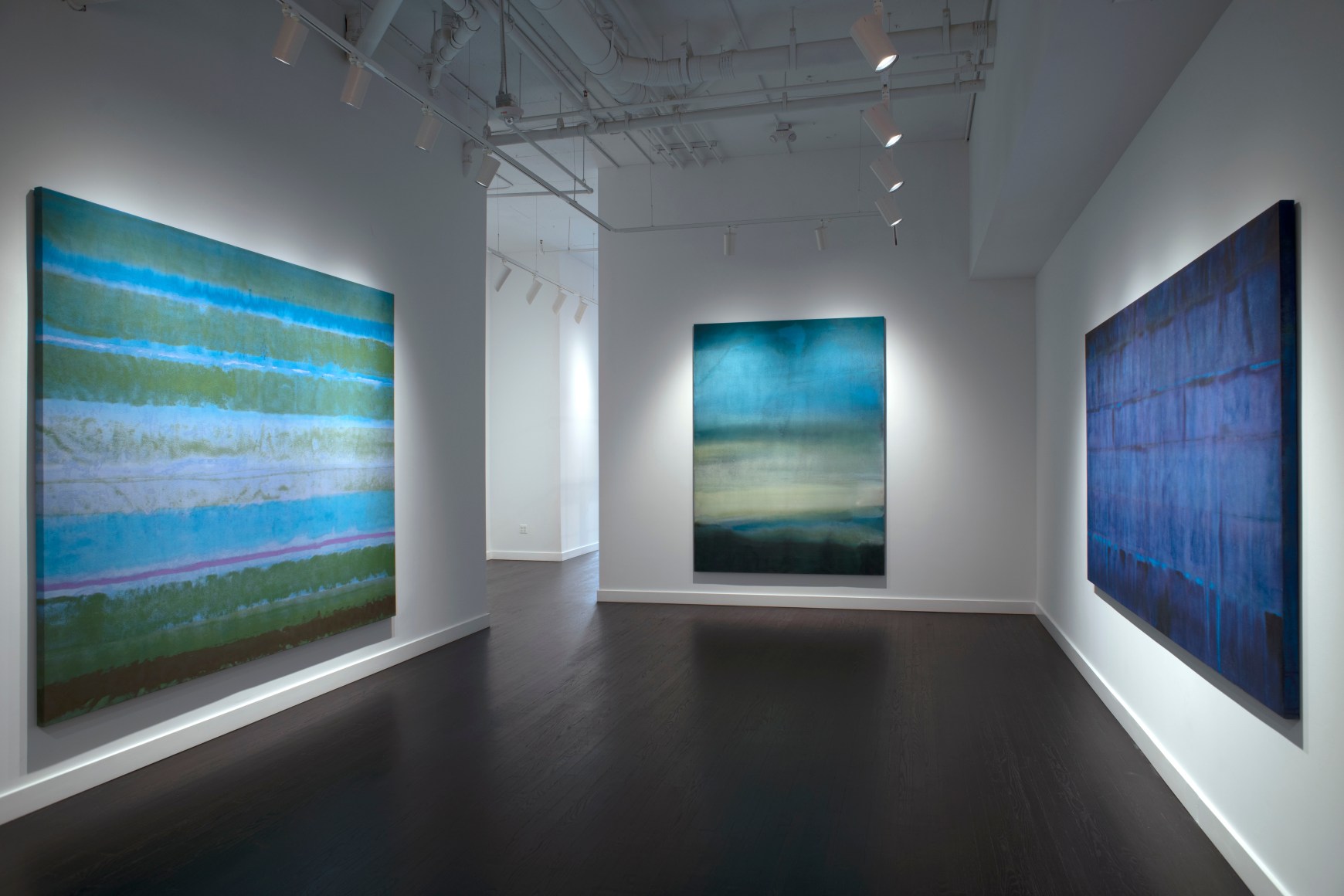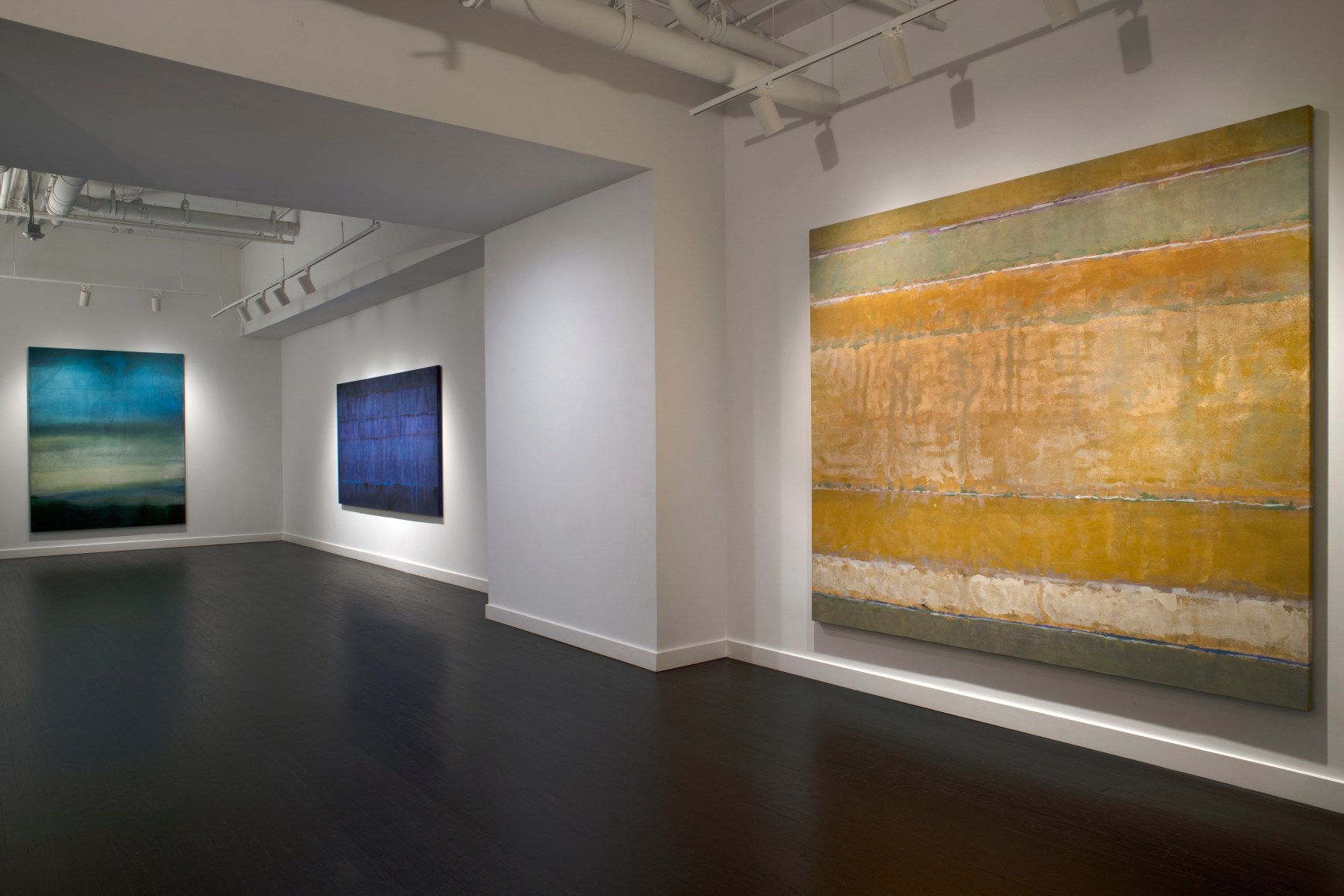Each core Washington Color School artist created and became identified with their initial motifs and techniques: Morris Louis with pours, columns and veils, Howard Mehring with overall blotting and layers of multiple colors, Gene Davis with stripes, Thomas Downing with dots, Kenneth Noland with the use of basic geometric shapes, and Gilliam initially with pouring into folded and draped unstretched canvas. Willem de Looper is identified by edge-to-edge overall staining into raw canvas. All the artists worked with unprimed canvas and acrylic paint, although some of the earliest works are in Magna, a precursor to acrylic.
As time passed and careers progressed, most Color School painters pursued variation in degrees from their initial breakthrough strategies. Only de Looper, Mehring and Gilliam managed a second act through an evolution in execution and content. Louis died at 52, only having developed his signature style six years earlier. Mehring moved from his overall dabbed layering of color into colorful, hard-edge, symmetrical work. He stopped painting, dying at 47, his second act cut short. Mid-career, Davis abandoned stripes only to immediately return. Davis passed at 64. Downing’s mature work was created during his last ten years of residence in DC. In this period, along with his dot paintings, he also made geometrically shaped canvases concurrently. This was not an evolution in style, but more of an alternate path. Downing was not productive after leaving Washington, dying at 57. Noland, throughout his long career, remained consistent with his earliest color field work, only varying in detail, not substance. Only de Looper and Gilliam were able to sustain and fulfill second acts of depth.
In 1973, after de Looper’s initial recognition and success, he and his wife Frauke made a long-anticipated trip across the United States. For east coasters of European origins, the deserts and mountains of the American Southwest were a revelation. Upon Willem's return to DC, he limited his color palette. He began applying paint with various paint rollers, developing a motif of horizontal bands of layered colors, adhering to staining with acrylic paint into un-primed canvas. Generally, de Looper's second act can be separated between earth tones, foliage and sky colors. The divide between the bands of color points to the drama of the sometimes severe, and other times the nearly indistinguishable boundaries within nature. De Looper can be applauded for extending the content of the Color School by holding back from illustrating the visual experience of desert and sky while creating parallel experiences reminiscent of his and Frauke's revelations in the American Southwest. Most of his paintings from 1973 to 1976 are larger than those from the previous period. Anyone experiencing the grandeur of the canyons, deserts, and mountains of the Southwest for the first time feels a shift in their perception of scale. Undoubtedly, this pushed the artist to build larger work for a more overwhelming experience.
Our previous de Looper exhibition, “Paintings 1968 - 1972,” was quintessential Washington Color School. Like his contemporaries, the work does not refer to anything outside the painting itself, yet they are not hermetic. The current show, “Paintings 1972 - 1975” opens up by letting the spirit of the sky and the earth in, without compromising what the Color School had achieved, a second act and a rarity among his peers.
The exhibition is accompanied by an illustrated catalogue, 48 pages with 9 full color reproductions, and an introduction essay by Jane Livingston published by HEMPHILL Artworks and the Frauke and Willem de Looper Foundation.




